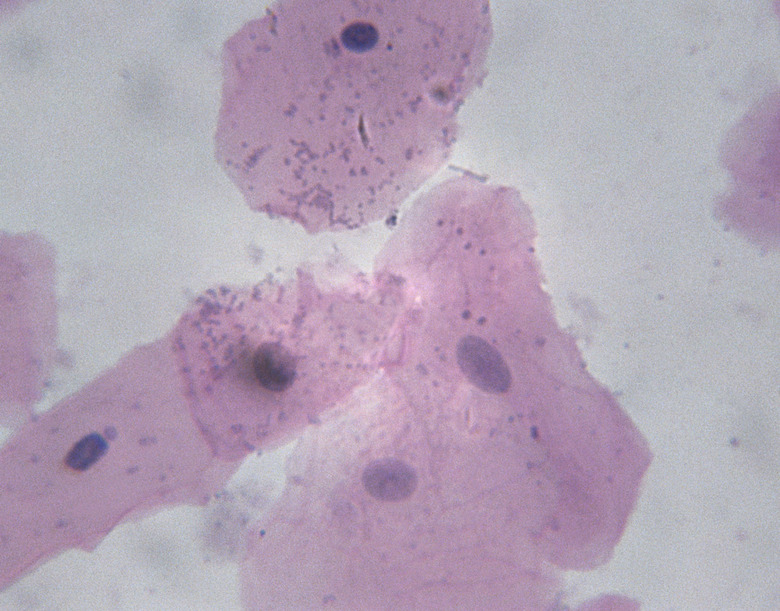What Is Aerobic Vs. Anaerobic In Biology?
Your body is made up of tens of trillions of cells, each of which needs fuel to function properly and keep you healthy. You fuel your body by taking in air, water and food – but the food you eat can't immediately be used to power your cells. Instead, after your food has been digested and the vitamins and other nutrients in it have been distributed to your cells, one more step must be taken to convert nutrients into cell power. This process is known as cellular respiration (respiration for short): When people discuss the idea of aerobic vs anaerobic in biology, they are often referring to the two different types of cellular respiration – and the cells capable of each type of respiration.
TL;DR (Too Long; Didn't Read)
In order to function properly, cells transform nutrients into a fuel known as adenosine triphosphate (ATP) through the process of cellular respiration. This process begins with glycosis, which breaks down glucose into ATP, but the presence of oxygen increases the amount of ATP a cell can produce at the cost of damaging the cell slightly. Whether a cell uses aerobic vs anaerobic respiration will depend on whether oxygen is available; aerobic respiration uses oxygen, while anaerobic respiration does not.
Working for ATP
Working for ATP
The cells in any living organism require energy to do their jobs, whether that's protecting the body from harmful bacteria, breaking down food inside the stomach or making sure that the brain can recall and use information efficiently. Cellular energy is carried within packages of adenosine triphosphate, a molecule formed from glucose (sugar). Adenosine triphosphate, also known as ATP, functions like battery packs for the cells inside an organism; packages of ATP can be carried around the body and used to power a cell's functions, and once ATP molecules have been created and used, they can be "recharged" fairly easily. But ATP takes some effort to create. To make it, a cell is required to go through the process of cellular respiration.
Cellular Respiration Basics
Cellular Respiration
Basics
All cells must undergo cellular respiration in order to function. At its simplest, cellular respiration is the process a cell takes to break down the nutrients and sugars it carries – nutrients and sugars provided by the food you eat – in order to turn them into packages of ATP that can be used to power the cell as it goes about its work. While respiration will occur in different locations, depending on the type of cell, all cells begin the process of respiration with glycosis, a series of chemical reactions that break down glucose. What happens after glycosis will depend on the cell's relationship with oxygen, and whether any oxygen is present.
Oxygen Use and Glycosis
Oxygen Use and
Glycosis
In biology, oxygen is an odd thing. Most organisms need it to survive, and use it to process energy more efficiently. However, at the same time, oxygen can be corrosive; in the same way that it can cause metal to rust, too much oxygen in a cell can cause the cell to degrade and fall apart if the oxygen isn't used up fast enough. For this reason, cells are often classified as aerobes and anaerobes. Whether a cell is an aerobe or anaerobe depends on whether or not that cell can process oxygen – and as a result, what type of respiration that cell uses. A cell with anaerobic biology, for example, will use anaerobic respiration, while a cell with aerobic biology will use the oxygen-enhanced aerobic respiration. The bulk of respiration will occur after glycosis begins, and it is distinguished by whether or not oxygen is used to break the products of glycosis down further.
Aerobic vs Anaerobic Respiration
Aerobic vs Anaerobic
Respiration
After glycosis occurs, glucose in a cell is broken up into a handful of chemical byproducts. Some of these are useful, while others are not. In anaerobic respiration, ethanol or lactic acid is then used to process these byproducts into two molecules of ATP and some less-useful products – but in aerobic respiration, oxygen is used for processing instead. As a result, the byproducts produced by glycosis can be broken down further, leading to the creation of four ATP molecules. This makes aerobic respiration more efficient, but it can lead to the risk of cellular breakdown as a result of oxygen buildup. In the end, however, ATP is always produced.
References
- Georgia State University: HyperPhysics: Cellular Respiration
- Georgia State University: HyperPhysics: Glycolysis
- Georgia State University: HyperPhysics: Fermentation
- Science Magazine: ScienceShot: Animals That Live Without Oxygen
- Seattle PI: What Is Aerobic vs. Anaerobic in Biology?
- University of Wyoming: Benefits and Costs of Aerobic Respiration
- BYU Idaho: Aerobic vs. Anaerobic
- Genetic Science Learning Center: ATP
Cite This Article
MLA
Flournoy, Blake. "What Is Aerobic Vs. Anaerobic In Biology?" sciencing.com, https://www.sciencing.com/aerobic-vs-anaerobic-biology-17095/. 5 November 2018.
APA
Flournoy, Blake. (2018, November 5). What Is Aerobic Vs. Anaerobic In Biology?. sciencing.com. Retrieved from https://www.sciencing.com/aerobic-vs-anaerobic-biology-17095/
Chicago
Flournoy, Blake. What Is Aerobic Vs. Anaerobic In Biology? last modified March 24, 2022. https://www.sciencing.com/aerobic-vs-anaerobic-biology-17095/
